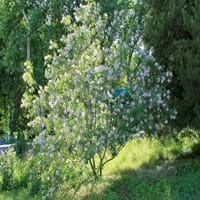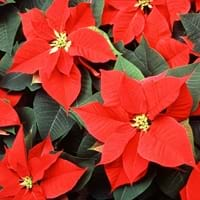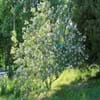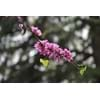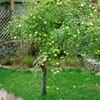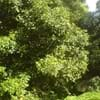Life Span
Perennial
Perennial
Origin
Hybrid origin
Mexico
Types
Not Available
Prestige Red Poinsettiea, Snowcap White Poinsettia, Sparkling Punch Poinsettia, Enduring Pink Poinsttia
Number of Varieties
Not Available
Habitat
Dry areas, Semi desert
Forest edges, Tropical regions
USDA Hardiness Zone
7-11
9-15
Sunset Zone
3a, 3b, 4, 5, 6, 7, 8, 9, 10, 11, 12, 13, 14, 15, 16, 17, 18, 19, 20, 21, 22, 23, 24
H1, H2, 13, 16, 17, 18, 19, 20, 21, 22, 23, 24
Habit
Oval or Rounded
Upright/Erect
Flower Color
White, Purple, Pink, Light Pink, Lavender
Yellow, Red, Light Pink, Coral
Flower Color Modifier
Bicolor
Multi-Color
Fruit Color
Not Available
Not Available
Leaf Color in Spring
Green
Green, Dark Green
Leaf Color in Summer
Green
Dark Green
Leaf Color in Fall
Green
Dark Green
Leaf Color in Winter
Not Available
Green, Dark Green
Leaf Shape
Long Elliptic
Bracts
Plant Season
Spring, Summer, Fall
Fall, Winter
Sunlight
Full Sun
Full Sun, Partial Sun
Type of Soil
Loam, Sand
Loam, Sand
The pH of Soil
Neutral, Alkaline
Acidic, Neutral
Soil Drainage
Well drained
Well drained
Bloom Time
Late Spring, Early Summer, Summer, Late Summer, Early Fall, Fall
Late Fall, Early Winter, Winter
Tolerances
Drought
Drought
Where to Plant?
Ground
Container, Ground, Pot
How to Plant?
Seedlings, Stem Planting
Seedlings
Plant Maintenance
Medium
Medium
Watering Requirements
Keep ground moist, Water Deeply, Water less during winter
Keep the ground moist but not water-logged, Requires regular watering, Requires watering in the growing season
In Summer
Lots of watering
Lots of watering
In Spring
Moderate
Moderate
In Winter
Average Water
Average Water
Soil pH
Neutral, Alkaline
Acidic, Neutral
Soil Type
Loam, Sand
Loam, Sand
Soil Drainage Capacity
Well drained
Well drained
Sun Exposure
Full Sun
Full Sun, Partial Sun
Pruning
Prune if you want to improve plant shape, Remove dead branches, Remove dead leaves, Remove dead or diseased plant parts, Requires little pruning, Requires very little pruning
Do not prune during shooting season, Prune after flowering, Prune lower leaves, Prune to control growth, Requires little pruning
Fertilizers
All-Purpose Liquid Fertilizer, fertilize in growing season
All-Purpose Liquid Fertilizer
Pests and Diseases
Insects, Red blotch
Bacterial Stem Rot, Botrytis Blight, Canker, Powdery mildew, Pythium rot, Rhizoctonia Root Rot
Plant Tolerance
Drought, Heat Tolerance
Drought
Flower Petal Number
Single
Single
Foliage Texture
Medium
Coarse
Foliage Sheen
Matte
Matte
Attracts
Hummingbirds, Butterflies
Not Available
Allergy
Not Available
Eye irritation, Mouth itching, Skin rash, Stomach burn, Throat itching
Aesthetic Uses
Beautification, Landscape Designing, Showy Purposes
Beautification, Bouquets, Showy Purposes
Beauty Benefits
Not Available
Not Available
Environmental Uses
Air purification, Amazing growth rate, Food for birds, Food for insects, Nesting sites for birds, No fertilizer, pesticides, or herbicides needed, Prevent Soil Erosion
Air purification
Medicinal Uses
No Medicinal Use
Fever, Pain killer, Tooth ache
Part of Plant Used
Flowers
Flowers, Leaves
Other Uses
Decoration Purposes, Showy Purposes, Used as Ornamental plant
Economic Purpose, Showy Purposes, Used as Ornamental plant
Used As Indoor Plant
No
Yes
Used As Outdoor Plant
Yes
Yes
Garden Design
Feature Plant, Foundation, Mixed Border, Shade Trees
Container, Feature Plant, Houseplant, Mixed Border, Tropical
Botanical Name
X CHITALPA tashkentensis
EUPHORBIA pulcherrima '490 Jingle Bells'
Common Name
Chitalpa
Poinsettia
In Hindi
Chitalpa संयंत्र
Poinsettia
In German
Chitalpa Pflanze
Poinsettia
In French
plante Chitalpa
Poinsettia
In Spanish
planta Chitalpa
Poinsettia
In Greek
φυτό Chitalpa
Αλεξανδρινό
In Portuguese
planta Chitalpa
Poinsétia
In Polish
Chitalpa roślin
Poinsecja
In Latin
Chitalpa herba
Poinsettia
Phylum
Magnoliophyta
Anthophyta
Class
Not Available
Eudicotyledones
Order
Lamiales
Malpighiales
Family
Bignoniaceae
Euphorbiaceae
Clade
Angiosperms, Asterids, Eudicots
Angiosperms, Eudicots, Rosids
Tribe
Not Available
Not Available
Subfamily
Not Available
Not Available
Number of Species
Not Available
Season and Care of Chitalpa and Poinsettia
Season and care of Chitalpa and Poinsettia is important to know. While considering everything about Chitalpa and Poinsettia Care, growing season is an essential factor. Chitalpa season is Spring, Summer and Fall and Poinsettia season is Spring, Summer and Fall. The type of soil for Chitalpa is Loam, Sand and for Poinsettia is Loam, Sand while the PH of soil for Chitalpa is Neutral, Alkaline and for Poinsettia is Acidic, Neutral.
Chitalpa and Poinsettia Physical Information
Chitalpa and Poinsettia physical information is very important for comparison. Chitalpa height is 460.00 cm and width 460.00 cm whereas Poinsettia height is 35.60 cm and width 45.70 cm. The color specification of Chitalpa and Poinsettia are as follows:
Chitalpa flower color: White, Purple, Pink, Light Pink and Lavender
Chitalpa leaf color: Green
Poinsettia flower color: Yellow, Red, Light Pink and Coral
- Poinsettia leaf color: Green and Dark Green
Care of Chitalpa and Poinsettia
Care of Chitalpa and Poinsettia include pruning, fertilizers, watering etc. Chitalpa pruning is done Prune if you want to improve plant shape, Remove dead branches, Remove dead leaves, Remove dead or diseased plant parts, Requires little pruning and Requires very little pruning and Poinsettia pruning is done Do not prune during shooting season, Prune after flowering, Prune lower leaves, Prune to control growth and Requires little pruning. In summer Chitalpa needs Lots of watering and in winter, it needs Average Water. Whereas, in summer Poinsettia needs Lots of watering and in winter, it needs Average Water.
